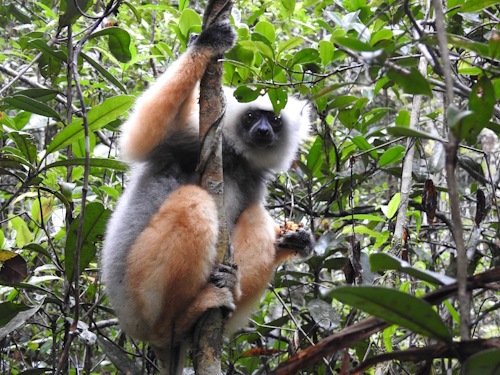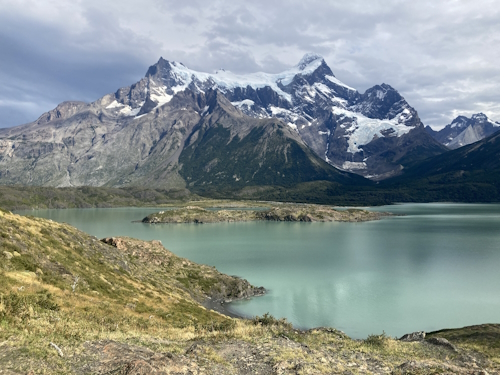Blog Connections
The World’s Greatest Natural Areas
Solivagant often sends me inspirational things on WH-related topics, but I don’t always have the time to do something with them. This also was the case with ‘The World’s Greatest Natural Areas’. At the 24-hour ferry back from Ogasawara, I finally found some focused hours to digest this article published in 1982 by the Commission on National Parks and Protected Areas (CNPPA) of IUCN. This was in the early years of the World Heritage Convention, and they decided to come up with an indicative inventory of natural sites with the potential to be listed. It’s interesting to see where we stand now, 42 years later.

The Inventory
The CNPPA came up with 219 different sites in its concise and well-written article, spread across the biogeographic realms as follows:
- Nearctic: 33
- Palaearctic: 42
- Afrotropical: 47
- Indomalayan: 31
- Oceanian: 14
- Australian: 13
- Antarctic: 6
- Neotropical: 33
Their WH status now
Of the 219 proposals, 115 sites have since acquired WH status and 29 more are on the Tentative Lists. Some WHS are partial representations of the proposals in “The World’s Greatest Natural Areas” – a smaller version was proposed (Marine Lakes of Palau instead of the Rock Islands eg.), or a broader version (Rainforests of Southern Mindanao instead of only Mt. Hamiguitan). Furthermore, they also included sites we now know only as cultural WHS, such as Rapa Nui, Nan Madol, Angkor, Niah Caves, Nikko, Mont Saint-Michel and Mogao Caves (I have not added those to the totals).

Findings
- With 219 considered worthy, in 1982 they were already thinking in the high range of numbers we have today (231 natural WHS to date, plus 40 mixed WHS).
- There seems to have been a focus on established ‘safari parks’ (Kruger, Perinet, and other well-known parks in Kenya, Tanzania, and South Africa) and other clear-cut areas such as those managed by the US National Park Service.
- Countries like Canada and the USA are extensively covered, while others such as Brazil and Papua New Guinea have very poor coverage. And it may have seemed unfathomable in 1982 that Iran could have natural WHS too and that China has reached 19 so far.
- For Antarctica, being aware of its special status, they chose a surrogate in the Australian Antarctic Territory.
- As this was a scientific exercise and not a state-centered process as is the WHC, they proposed the sensible combinations of both Iguaz(c)us, both Sundarbans, and Manas on both sites of the border. On the other hand, Bialowieza was seen as Polish only.
- The inclusion of Zhoukoudian (Choukotien) and the Niah Caves indicates that they considered early hominid fossil sites as nature, while they are categorized as cultural nowadays.

Missing Sites and Sites Missing
The list of 219 also provides inspiration for sites that are Missing from the List, but could be worthy candidates. There are 73 sites proposed by the CNPPA that we haven’t encountered yet in the WH domain. Regarding Indonesia for example, they have selected Siberut Island (isolated evolution of plants and birds) and Kutai Game Reserve (for Bornean gibbons and orangutans). In Venezuela, they name Henry Pittier NP for its spring and autumn migrations of millions of birds and butterflies.
The other way around, there have been natural and mixed WHS inscribed since that don’t feature at all in this inventory. No less than 162 of them! The more recent, niche ones (Wadi al Hitan, Vallee de Mai, Los Alerces, etc.) are all missing, and obviously no one thought about the Flow Country yet. Clear oversights include the Cape Floral region, Socotra, the big Sahara sites, any of the Brazilian Atlantic Forests, the Wadden Sea, Socotra, and Ilulissat. Sites like the Norwegian Fjords and Ha Long Bay are also notably missing: the scientists weren’t focused so much on natural beauty.
I’ve published the lists of Greatest Natural Areas still on the T List and Greatest Natural Areas with no follow-up at all at the Forum for future reference. Pictures in this post show the non-represented Greatest of Perinet (now called Analamazaotra, Madagascar), Torres del Paine (Chile) and Etosha (Namibia).
Els - 6 October 2024
Comments
Solivagant 6 October 2024
@meltwaterfalls
I think they were always seen as "Cultural" by UNESCO. Those which had been inscribed BEFORE this 1982 report on "Natural sites" had been nominated as Cultural and ONLY evaluated by ICOMOS e.g Awash and Omom (1980). So why did the CNPPA decide to suggest that Choukoudian was a suitable future Natural site??? Conceptually there comes some point in human development at which the purely "animal" is left and the "cultural" is entered. I suspect that knowledge of and views on this will have changed somewhat since 1982 in that non humans have "cultures" too and one of the distinguishing factors previuosly used to identify "human" i.e Tool useage is now known not to be so signficant. In any case with the case law of Awash and Omo why did CNPPA suggesta site which was much closer to "moderun human" in timescale than those already categorised as Cultural as Natural
Meltwaterfalls 6 October 2024
Seeing the early hominid sites in there as natural is interesting. I’m not fully across academic classifications, is this a result of a shift in how such sites are viewed compared to 40 years ago?
Also seeing Vezere Valley on there is interesting, I’m assuming that is a reflection of the natural setting (I always thought it to be an interesting landscape but probably not world class) sure it isn’t prehistoric cultural sites being classified as natural
Solivagant 6 October 2024
The report was dated Sept 82 i.e before the Dec 1982 WHC in Paris. The number of Natural and Nixed WHS to that time was 26 (!978 - 4, 79 - 9, 80 - 3, 81 - 10). EVERY ONE of these is included among the report's list of "Greatest Natural Areas" EXCEPT Durmitor!!! Either the report didn't want to create waves by suggesting that some already inscribed WHS were not worth the honour or it genuinely did believe them to be so. I presume that the exclusion of Durmitor could have been a mistake since the Balkan Highlands ARE identified as a separate "Area" within the Palearctic. Most of the 26 ARE quite signficiant .....but Djoudj and Ichkeul? The description of Djoudj is pretty perfunctory and doesn't indicate great support for it, but Ichkeul is lauded as "N Africa's most important wetland". I fear it has somewhat degraded....